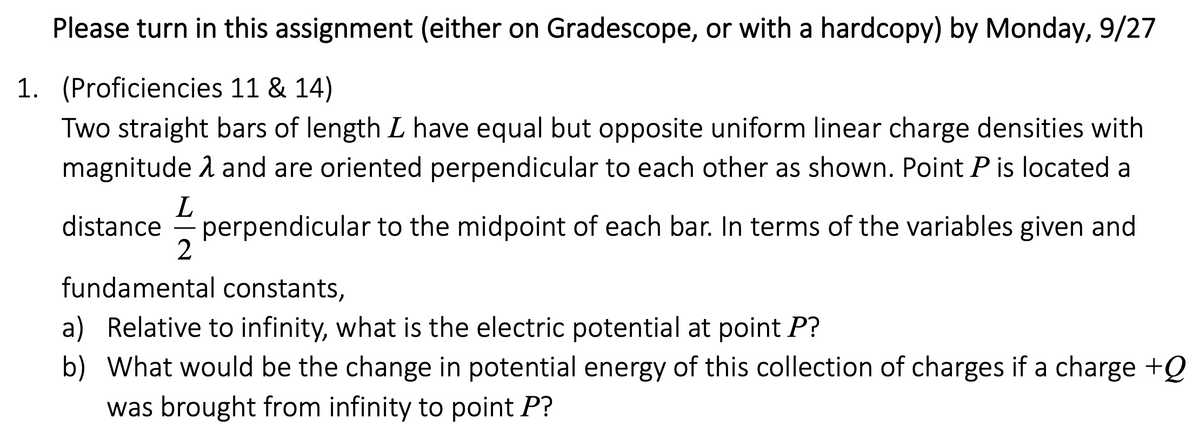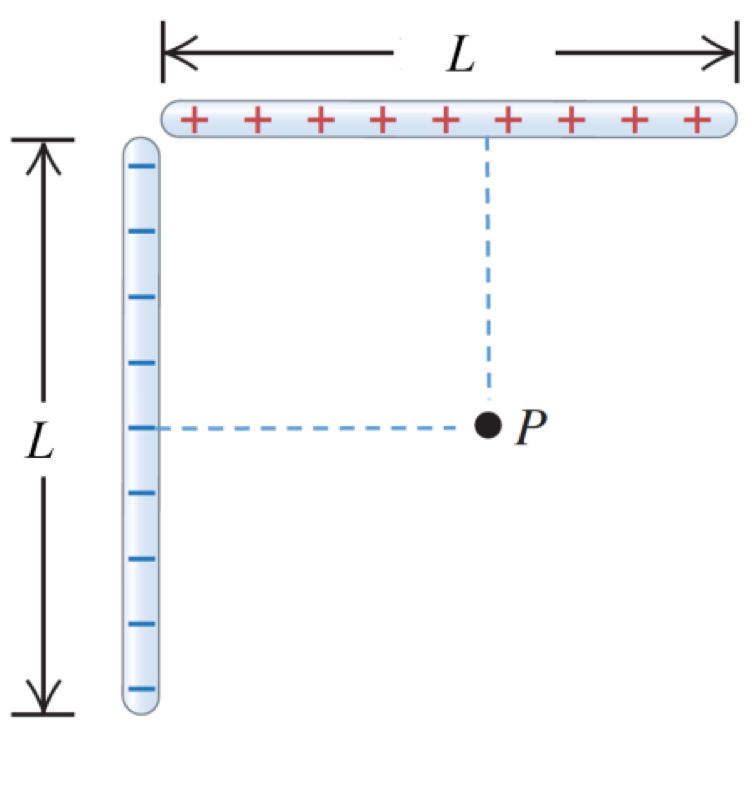Two straight bars of length L have equal but opposite uniform linear charge densities with magnitude 1 and are oriented perpendicular to each other as shown. Point P is located a L perpendicular to the midpoint of each bar. In terms of the variables given and 2 distance fundamental constants, a) Relative to infinity, what is the electric potential at point P? b) What would be the change in potential energy of this collection of charges if a charge +Q was brought from infinity to point P?
Two straight bars of length L have equal but opposite uniform linear charge densities with magnitude 1 and are oriented perpendicular to each other as shown. Point P is located a L perpendicular to the midpoint of each bar. In terms of the variables given and 2 distance fundamental constants, a) Relative to infinity, what is the electric potential at point P? b) What would be the change in potential energy of this collection of charges if a charge +Q was brought from infinity to point P?
Related questions
Question
Can you answer all parts please

Transcribed Image Text:Please turn in this assignment (either on Gradescope, or with a hardcopy) by Monday, 9/27
1. (Proficiencies 11 & 14)
Two straight bars of length L have equal but opposite uniform linear charge densities with
magnitude 1 and are oriented perpendicular to each other as shown. Point P is located a
L
perpendicular to the midpoint of each bar. In terms of the variables given and
2
distance
fundamental constants,
a) Relative to infinity, what is the electric potential at point P?
b) What would be the change in potential energy of this collection of charges if a charge +Q
was brought from infinity to point P?

Transcribed Image Text:L
+ + +
+ + + + + +
L
P
Expert Solution
This question has been solved!
Explore an expertly crafted, step-by-step solution for a thorough understanding of key concepts.
This is a popular solution!
Trending now
This is a popular solution!
Step by step
Solved in 4 steps
